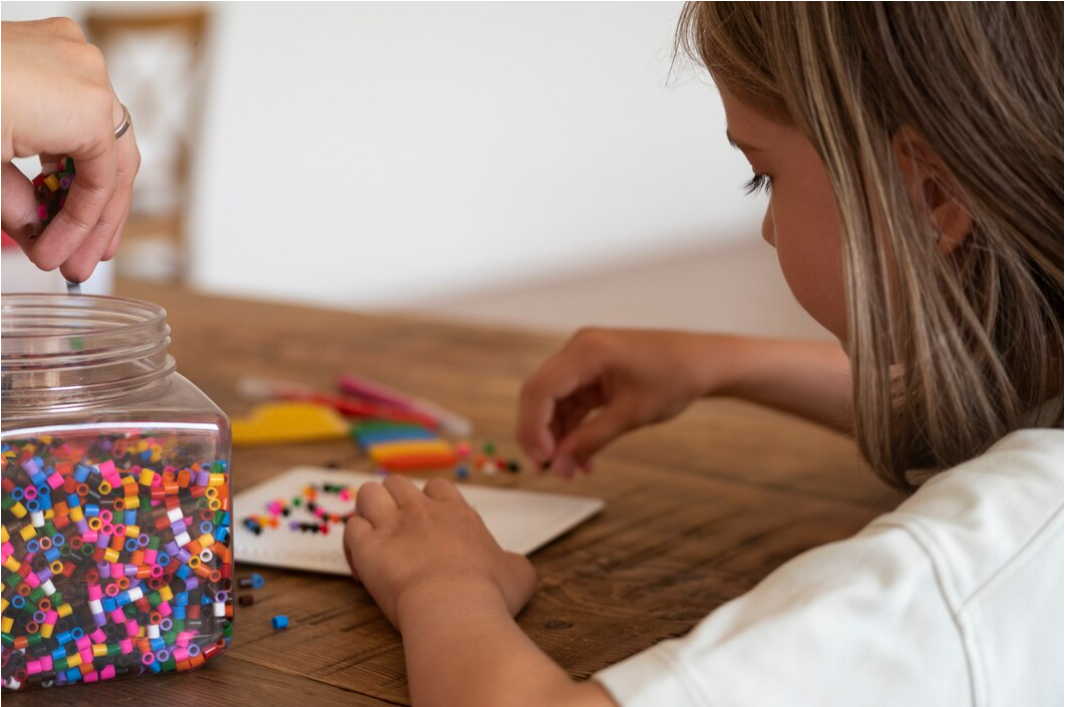
Individual Sensory Needs: Unlocking the Unique Sensory World of Preschoolers
The world is a symphony of sensory experiences, and for preschoolers, these sensations hold immense significance in their development and understanding of the world around them. However, not all preschoolers experience sensory stimuli in the same way. Each child has unique sensory needs, which influence how they process and respond to sensory input. Understanding and addressing these individual sensory needs is crucial for creating supportive environments that nurture preschoolers’ sensory development, well-being, and overall growth.
Sensory Processing: The Key to Understanding Individual Sensory Needs
Sensory processing refers to the way preschoolers receive, interpret, and respond to sensory information from their environment. It involves three primary patterns: sensory modulation, sensory discrimination, and sensory-based motor skills. Sensory modulation relates to how preschoolers regulate and respond to sensory input, such as filtering out irrelevant information or attending to significant stimuli. Sensory discrimination involves their ability to differentiate and make sense of sensory information. Sensory-based motor skills encompass the integration of sensory input with motor responses, enabling preschoolers to engage in coordinated actions.
Preschoolers’ sensory processing patterns can vary significantly. Some may have heightened sensitivity (hypersensitivity) to certain sensory stimuli, while others may exhibit decreased sensitivity (hyposensitivity) or difficulty integrating sensory input. These differences can impact their daily experiences, social interactions, and learning abilities. By understanding preschoolers’ sensory processing patterns, we can tailor environments and activities to meet their individual sensory needs effectively.
Sensory Seekers: Embracing the Need for Intense Sensory Input
Preschoolers who are sensory seekers actively seek out intense sensory input to regulate their sensory systems. They may seek tactile experiences by touching different textures, enjoy deep pressure or intense movements, and seek out strong tastes or smells. Sensory seekers often engage in energetic activities, such as jumping, spinning, or rough play, to satisfy their need for sensory stimulation.
Recognizing and accommodating the sensory needs of seekers is crucial to supporting their overall development. Providing opportunities for sensory-rich experiences, such as sensory bins, textured play materials, or structured movement activities, can help meet their sensory needs in a constructive and safe manner. By embracing their need for intense sensory input, we empower sensory seekers to navigate their world with a greater sense of calm and focus.
Sensory Avoiders: Creating Calming and Supportive Environments
On the other end of the sensory spectrum, some preschoolers may be sensory avoiders, who demonstrate sensitivity to specific sensory stimuli and actively avoid or become overwhelmed by them. They may be sensitive to loud noises, bright lights, certain textures, or strong smells. Sensory avoiders may exhibit cautious or fearful behavior in response to these stimuli and may seek to minimize their exposure to sensory triggers.
Creating calming and supportive environments is essential for sensory avoiders. Providing a quiet and predictable space, using soft lighting, and minimizing sensory distractions can help reduce sensory overload and promote a sense of security. Offering alternatives or accommodations, such as noise-canceling headphones, visual schedules, or sensory-friendly materials, can empower sensory avoiders to engage in activities and interactions more comfortably.
Sensory Overload: Recognizing and Managing Overstimulation
Preschoolers with sensory processing challenges may experience sensory overload, wherein they become overwhelmed by sensory input and struggle to process or regulate it effectively. This can lead to meltdowns, withdrawal, or disruptive behaviors. Sensory overload can occur in environments with excessive sensory stimuli, such as crowded spaces, loud noises, or overwhelming visual displays.
Recognizing signs of sensory overload is crucial for supporting preschoolers during these challenging moments. Providing them with a safe and quiet space to retreat and decompress, offering calming activities like deep pressure techniques or mindfulness exercises, and using visual cues or social stories to prepare them for overwhelming situations can assist in managing sensory overload effectively.
Individual Sensory Profiles: Uniqueness in Sensory Needs
Each preschooler possesses an individual sensory profile, encompassing their specific strengths, challenges, and preferences regarding sensory experiences. Understanding their unique sensory profiles allows us to tailor interventions and create environments that align with their sensory needs, promoting optimal engagement and well-being.
Conducting sensory assessments and creating individual sensory profiles can help caregivers and educators gain insights into preschoolers’ sensory preferences and sensitivities. It allows for the development of personalized strategies to support their sensory integration and participation in daily activities. By recognizing and honoring their individual sensory profiles, we respect their uniqueness and provide them with the best possible support for their sensory development.
Sensory-Inclusive Environments: Promoting Sensory Well-being for All
Creating sensory-inclusive environments is vital for meeting the diverse sensory needs of preschoolers. It involves designing spaces and activities that cater to a wide range of sensory preferences, allowing every child to engage, explore, and thrive. Sensory-inclusive environments consider factors such as lighting, acoustics, visual displays, and the availability of sensory materials.
Incorporating sensory breaks, providing flexible seating options, offering sensory tools and resources, and involving preschoolers in sensory-rich activities are all strategies to foster sensory well-being for all preschoolers. By embracing individual sensory needs and promoting sensory-inclusive environments, we create inclusive spaces that honor and celebrate the diverse sensory experiences of preschoolers.
Recognizing and addressing the individual sensory needs of preschoolers is essential for their sensory development, well-being, and overall growth. By understanding their unique sensory processing patterns, supporting sensory seekers and avoiders, managing sensory overload, and creating sensory-inclusive environments, we provide preschoolers with the necessary tools and environments to navigate their sensory world successfully. Let us embrace the uniqueness of each preschooler’s sensory needs and create supportive environments that unlock their full potential for sensory exploration and integration.
Supporting Sensory Regulation: Strategies for Self-Calming and Focus
Preschoolers with individual sensory needs may benefit from specific strategies that promote self-calming and focus. These strategies aim to support sensory regulation and help preschoolers navigate their sensory experiences more effectively. By providing them with tools and techniques to regulate their sensory systems, we empower them to engage in activities and interactions with greater ease and comfort.
1. Sensory Diet: A sensory diet is a personalized plan of activities that provide the right balance of sensory input to meet a preschooler’s sensory needs. It typically includes a combination of sensory-rich activities, such as swinging, jumping on a trampoline, squeezing stress balls, or engaging in deep pressure activities. Developing a sensory diet in collaboration with occupational therapists or sensory integration specialists can be highly beneficial for preschoolers in managing their sensory needs.
2. Deep Pressure Techniques: Deep pressure is known to have a calming and organizing effect on the sensory system. Techniques such as deep pressure massages, weighted blankets, or compression garments can help preschoolers regulate their sensory systems and promote relaxation. These techniques provide a gentle and comforting pressure that helps them feel grounded and centered.
3. Sensory Breaks: Sensory breaks are short periods of time during the day when preschoolers can engage in activities that promote sensory regulation and reduce sensory overload. These breaks can involve quiet activities like reading in a cozy corner, engaging in deep breathing exercises, or using fidget tools to channel excess energy. Incorporating sensory breaks into daily routines allows preschoolers to recharge and refocus their sensory systems.
4. Sensory-Friendly Spaces: Designing sensory-friendly spaces within learning environments can provide preschoolers with dedicated areas where they can seek sensory input or find quiet retreat. These spaces can include sensory corners with soft lighting, comfortable seating options, and a variety of sensory materials to cater to different sensory preferences. Having designated spaces allows preschoolers to self-regulate and choose activities that align with their sensory needs.
5. Visual Supports: Visual supports, such as visual schedules or visual cues, can help preschoolers understand and anticipate sensory experiences throughout their day. Visual schedules provide a clear sequence of activities, reducing anxiety and promoting a sense of predictability. Visual cues, such as simple pictures or symbols, can help preschoolers understand expectations or transitions, enabling them to navigate sensory-rich environments more effectively.
6. Sensory-Friendly Tools and Materials: Providing preschoolers with sensory-friendly tools and materials can enhance their sensory experiences and support their self-regulation. This can include items like fidget toys, chewable necklaces, textured play materials, noise-canceling headphones, or visual timers. These tools empower preschoolers to manage sensory input and create a sense of control over their sensory environment.
By implementing these strategies, caregivers and educators can create a supportive framework that promotes self-calming and focus for preschoolers with individual sensory needs. Understanding and respecting their sensory preferences and offering appropriate tools and techniques enable them to navigate their world with confidence and engage in activities that support their overall development.
Supporting sensory regulation is crucial for preschoolers with individual sensory needs. By providing strategies such as sensory diets, deep pressure techniques, sensory breaks, sensory-friendly spaces, visual supports, and sensory-friendly tools and materials, we empower preschoolers to self-regulate and navigate their sensory experiences more effectively. Let us embrace these strategies and create environments that honor and support the unique sensory needs of preschoolers, fostering their growth, well-being, and success.
Building Sensory Awareness and Empathy in Others
Developing sensory awareness and empathy in others is essential for creating inclusive environments that support preschoolers with individual sensory needs. By fostering understanding and acceptance among caregivers, educators, and peers, we can promote a culture of empathy and create a supportive community for preschoolers with diverse sensory experiences.
1. Education and Training: Providing education and training to caregivers, educators, and peers about sensory processing and individual sensory needs is key to building awareness. Workshops, seminars, or professional development sessions can offer insights into sensory processing challenges and strategies for supporting preschoolers with sensory needs. By increasing knowledge and understanding, we can create a more empathetic and inclusive environment.
2. Communication and Collaboration: Open and effective communication among caregivers, educators, and professionals involved in a preschooler’s life is vital. Sharing information about a child’s sensory needs, preferences, and challenges ensures that everyone is on the same page and can provide consistent support. Collaborating with occupational therapists or other specialists can also enhance understanding and facilitate the implementation of strategies to address individual sensory needs.
3. Modeling and Role-Playing: Modeling appropriate responses and behaviors towards sensory challenges can help peers and caregivers develop empathy and understanding. Role-playing scenarios where individuals can experience what it feels like to have sensory sensitivities or challenges can deepen empathy and promote supportive interactions. By putting themselves in the shoes of preschoolers with sensory needs, others can develop a greater appreciation for their experiences.
4. Sensory Awareness Activities: Engaging in sensory awareness activities can create opportunities for individuals to explore and understand different sensory experiences. Activities such as sensory walks, sensory bins, or sensory simulations allow caregivers, educators, and peers to gain firsthand experiences of what it feels like to navigate sensory-rich environments. These activities foster empathy and encourage individuals to adapt their environments to meet the needs of preschoolers with sensory sensitivities.
5. Encouraging Acceptance and Respect: Promoting a culture of acceptance and respect is crucial for building empathy. Encourage open discussions about differences, emphasizing that everyone experiences the world differently. Teach preschoolers the value of respecting individual sensory needs and creating inclusive spaces where all preschoolers feel valued and understood. By fostering acceptance, we create a supportive environment that nurtures the well-being of all preschoolers.
6. Celebrating Sensory Diversity: Embrace and celebrate the diversity of sensory experiences. Highlight the strengths and unique abilities of preschoolers with individual sensory needs, fostering a sense of pride and belonging. Encourage peer interactions that embrace differences and promote inclusion. By celebrating sensory diversity, we create a culture that appreciates the richness and uniqueness of each individual’s sensory experiences.
By building sensory awareness and empathy in others, we can create a supportive network that understands and embraces the sensory needs of preschoolers. Through education, communication, modeling, sensory activities, acceptance, and celebration of diversity, we cultivate an environment that fosters empathy, understanding, and inclusivity.
Developing sensory awareness and empathy in caregivers, educators, and peers is crucial for creating inclusive environments that support preschoolers with individual sensory needs. By promoting education, communication, modeling, sensory activities, acceptance, and celebration of diversity, we foster a culture of empathy and understanding. Let us work together to create communities that embrace the unique sensory experiences of preschoolers and provide the support and acceptance they need to thrive.


